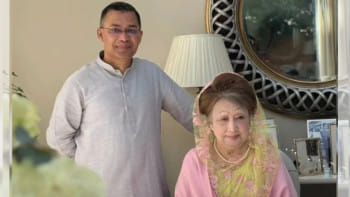A long story of the short kameez

Ayub was a charismatic fellow. He was the one to dine with the Camelots and western allies, and engage in fierce battles with eastern foes. And Jackie, the most glamorous First Lady till date, was a dear friend. While visiting Pakistan she would roam in open buggies, waving at the youth, who unmistakably, missed a heartbeat at her sight. She herself was impressed. In fact, so smitten by the Pakistani hospitality, Jacqueline Kennedy, while travelling via the Pakistan International Airways (PIA) to Paris, endorsed the airline slogan— Great People to Fly With.
This is not a lesson on politics or a barrage of facts and figures. Believe you me, this is about fashion…and maybe a little politics that comes with it!
Even before partition, the need for an airline that would connect the two wings of the Pakistan-to-be was conceived. Orient Airways Ltd. was established in 1946, with its base in Calcutta, Bengal, British India on 23 October 1946, for that very purpose. But it was not until 1955, when the flag carrier was re-christened Pakistan International Airlines, that things got heated up a little.
The powers that be wanted to flaunt the beginning of a new era, and PIA came as a useful tool. After all, the battle was not only being fought on land, but also in air against, the Raj!

Some may recall, while others like myself may have heard stories — in the mid-50s, advertisements ran on newspapers to apply for a distinguished new career for women, an ambassador of the nation in the skies; PIA cabin crew!
For a nation steeped in religious roots, the results were overwhelming. Thousands applied, and even nodded yes when asked if they would don the western skirt, or crop their hair short — the stereotyped image of the perfect stewardess.
Perhaps the question was rhetorical, as designer Laila Shahzada, and one Chausie Fountainer, the consultant stewardess training instructor from Pan American World Airways, already had the perfect costume in mind.
Something no one would want to be caught dead in this era!
It was simple — green shirt, white cuffs and starched collars. A white shalwar and dupatta, set in a crossed school-girl V across the chest completed the look. Shoes and bags were black. It was the green cap that was the real eye-sore, nevertheless a representation of a Pakistan not shy enough to embrace western ideology.
Within a decade of its formation the PIA became a leading airline of the region, but the cost was too much to bear. The lack of parity and political repression were lulled by images of radical development, this time heralded by the visionary — Ayub Khan.
The PIA costume went through further changes after 1960. Minor but worthy enough to take note. Feroze Cowasji, a Pakistani designer, just made the crossed dupatta slimmer, sleeves shorter, and akin to Micky Mouse's attire, introduced a white glove.
The pinnacle of pre-1971 Pakistani fashion trends was not brought by any local, it was Pierre Cardin, the giant in the field of fashion, who created the epitome of a blend of culture, tradition and panache, and introduced the “PIA Girl.”
The changes were radical but brought the desired effect. The shade turned fawn from green for summer flights, while retaining a touch of green for the seasonal winter uniforms.
It had a short “A” line tunic, slim-lined trousers that did not drop below the ankles, and added an imaginative dupatta, which as the saying went, “did not just cover heads. It also turned heads!”
And suddenly, fashionistas of West Pakistan as well as East Pakistan were tailoring the short kameez, to complement the sassy 'PIA Pyjamas.'
So the next time you don a short kameez, some trendy Capri-like pyjamas and a dupatta to wrap around and the chest and cover the head, remember to thank Cardin, and of course Khan — the master tailor.
Photo: LS Archive/Sazzad Ibne Sayed





Comments